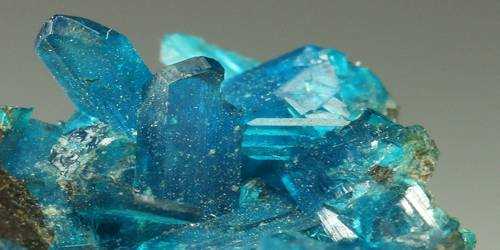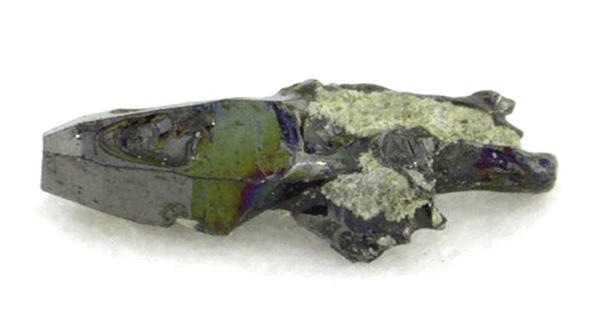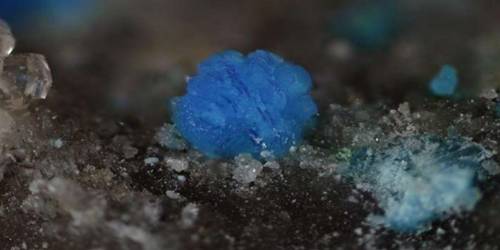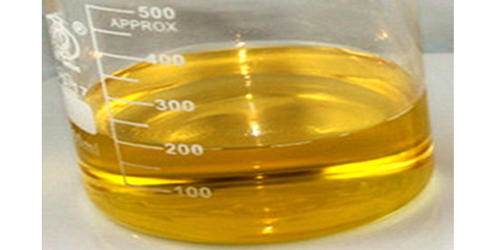Caledonite, whose name derives from Caledonia, the historical name of its place of discovery (Scotland), is a richly colored blue-green sulfate-carbonate mineral of lead and copper with an orthorhombic crystal structure. It was named after ‘Caledonia’, the Roman name for the Highlands of Scotland, where the mineral was first discovered.
Caledonite was first discovered at Leadhills, Lanarkshire, Scotland; a source of many interesting and unusual minerals. It is an uncommon mineral found in the oxidized zones of copper-lead deposits.
General Information
- Category: Sulfate minerals
- Formula: Cu2Pb5(OH)6CO3(SO4)3
- Crystal system: Orthorhombic
- Crystal class: Pyramidal (mm2) (same H-M symbol).
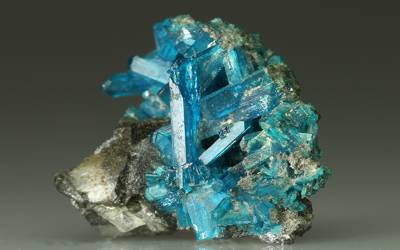
Properties
Caledonite can be identified in the field by its color variations, such as blue, blue-green, green, and dark green. Its transparent to translucent form has {001} perfect and {100} distinct cleavage. This mineral has a vitreous–greasy luster, with a greenish-white streak. The fracture of this mineral is uneven – flat surfaces.
The density of caledonite is 5.7 to 6.4 g/cm3, with a hardness of 2.5 to 3 – between fingernail and calcite. It is non-fluorescent.
- Color: Blue; green
- Crystal habit: Typically striated prismatic or tabular crystals; radial aggregates
- Fracture: Uneven
- Tenacity: Brittle
- Mohs scale hardness: 2.5 – 3
- Luster: Vitreous
- Streak: Green-white; blue-green
- Diaphaneity: Transparent to translucent
- Specific gravity: 5.6 – 5.8
Caledonite’s primary use is a collector’s mineral. Although it contains copper and lead, it is a secondary mineral and is not prevalent enough in any known deposits to be used as an ore. Its high luster, on the other hand, is more like secondary lead minerals. Localities in which caledonite occur as well developed crystals are quite rare and include the Mammoth-St. Anthony Mine at Tiger, Arizona, a few mines in California, such as the Reward Mine. A few other mines in Arizona and Chile have been known to produce samples.
Occurrence
Caledonite occurs in an uncommon secondary mineral in the oxidized portions of Pb–Cu deposits. Associated minerals include cerussite, anglesite, leadhillite, brochantite, linarite, azurite, and malachite. Caledonite is piezoelectric and generates a charge in response to pressure.
Information Source:
